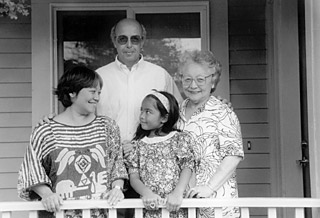The fact that so many feminists of the 70s came out of the Left—often moving toward, and actively developing, women’s liberation activism out of frustration with the sexism of the Left—meant that a leftist economic analysis was present in a lot of 70s feminist groups in a way that it doesn’t tend to be today. Yes, even then there were (and the media focused on) large, white-liberal-led feminist organizations that were uncritical of dominant economic systems and were simply fighting for women’s piece of the American Dream pie, but there were also a lot of feminists coming out of a Left that saw the connections between economic exploitation, imperialism, and war.
It was during the 70s and 80s that radical women of color—often poor and working-class radical lesbians of color in particular—developed the multi-issue feminisms that are the basis of what we now call “intersectionality.” And what they meant was something deep: that all systems of domination are connected, that we cannot effectively challenge one form of abusive power while shoring up another, that shifts in power have to happen at the roots—roots, of course, being connected.
In 1986, the Combahee River Collective, a group of Black lesbians, wrote, “We are… trying… to address a whole range of oppressions…. If Black women were free, it would mean that everyone else would have to be free since our freedom would necessitate the destruction of all the systems of oppression.” 1
A few years before that, Cherrie Moraga introduced Loving in the War Years 2 with a poem in which two lovers are imprisoned together, facing certain death. One of them sees a slight possibility for escape if she goes it alone, but realizes there’s no way to escape together. Will she try to make her way toward freedom, leaving her lover behind? She considers it, but then, she writes, “Immediately I understand that we must, at all costs, remain with each other. Even unto death. That it is our being together that makes the pain, even our dying, human.”
Within dominant U.S. culture, many people would call this an unhealthy relationship. But I think this poem is not about co-dependence; it is about inter-dependence. The real point is not that it’s not worth it to survive without one’s lover because one would be lonely or lacking pleasure or grieving (although one would be, and that would be hard). The deeper meaning is that it is not worth it to survive without the other because freedom at another’s expense is not survival, is not freedom.
Getting free alone is not getting free.
Getting free at the expense of someone else isn’t freedom.
Freedom at the expense of someone else’s freedom is not freedom.
If what we are trying to bring into being is a world in which everyone is free from violence, in which everyone has housing and health care and food and freedom, that is a world rooted in interdependence. So we have to think about freedom and relationship, freedom in community.
It is one of the central violences of the dominant culture in the U.S.—and increasingly across the world as capitalism goes global—that if we all just focus on our own self-interest, somehow everything else is going to sort itself out.



